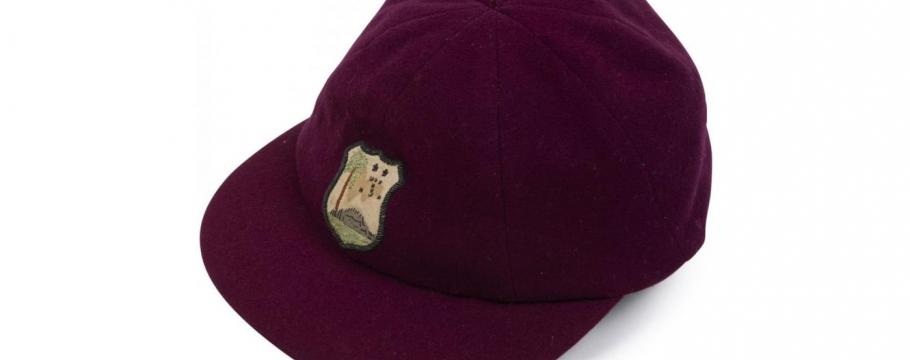

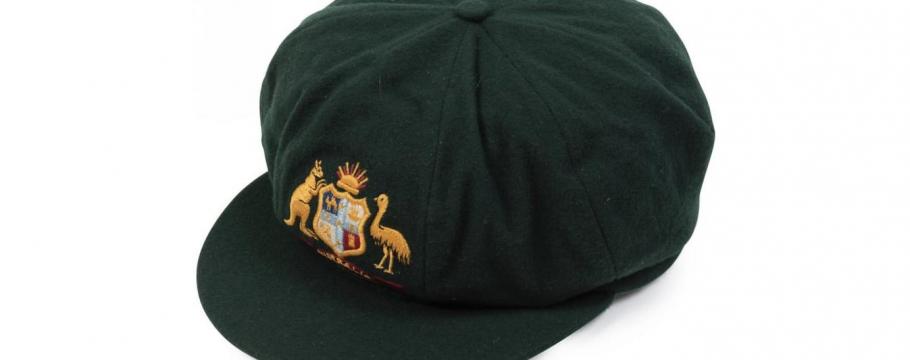
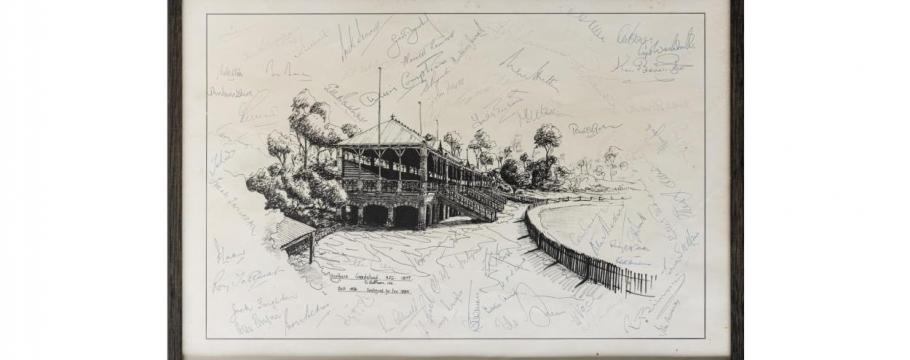
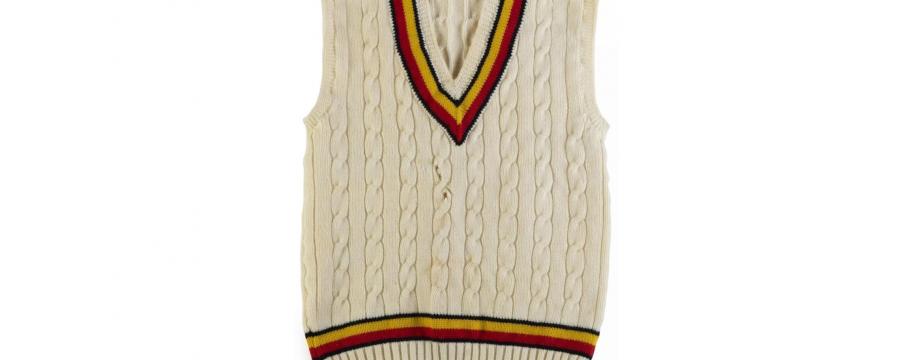
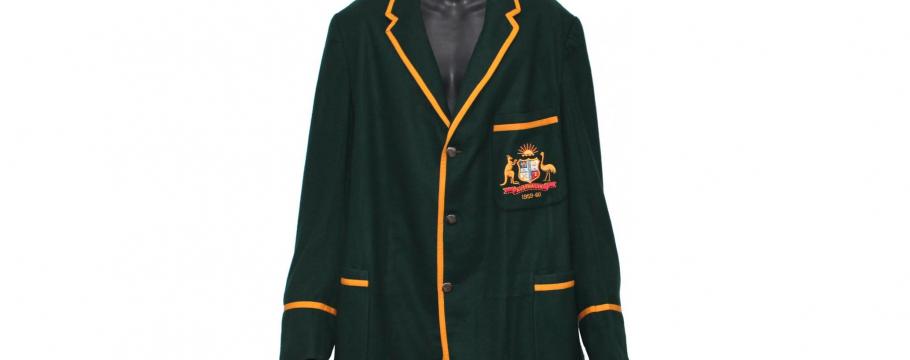


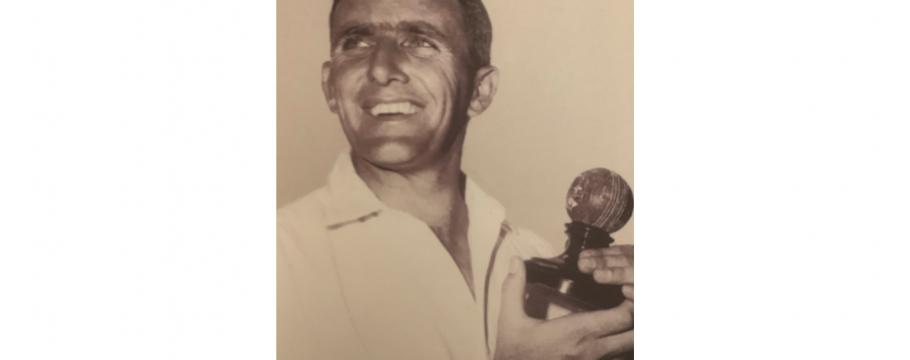
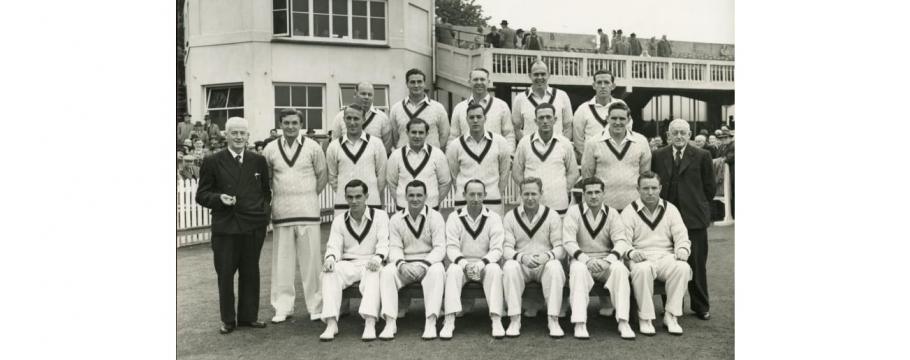
Australian fast bowling great's collection a piece of auction cricketing history
Author: Richard Brewster | Posted: 14th June, 2023
After he retired, legendary left-arm Australian fast bowler Alan Davidson (1929-2021) used to amuse guests at Sydney Cricket Ground official lunches by using round bread rolls to demonstrate how to hold a cricket ball to bowl an inswinger.
In fact, it became such an obsession that staff started substituting the elongated variety to counteract him.
As an Australian Test player, Davidson – who played 44 Tests from 1953-1963 – was unique in that he was the first player to score 100 runs and take 10 wickets in the same Test match, a feat he achieved in December 1960 during the famous historic tied First Test in Brisbane against a West Indies team led by Sir Frank Worrell.
His economy with a cricket ball was amazing. In 44 Tests, he took 186 wickets at 20.53, including hauls of five wickets in an innings 14 times, conceding on average over his career only two runs per over. He was no mug with a bat either, scoring 1328 runs at an average of 24.59.
Davidson also was a prolific collector of cricketing and other memorabilia, with son Neil revealing that the double garage and two bedrooms at the family home were full of unopened trunks and boxes containing items that he never looked at again once he came home – including all the guest dinner napkins from the 1977 Centenary Test against England at the Melbourne Cricket Ground and a multi-signed photo of the ground taken in 1877 (lot 2614).
Now cricketing buffs and other collectors will have their opportunity to gain a little piece of cricketing history when Alan Davison’s collection is auctioned as part of a three-day sale from 11am Wednesday June 28 to Friday June 30 by Abacus Auctions at 29 Hardner Road, Mount Waverley.
The sale includes stamps, postal history, coins and banknotes, sporting memorabilia and other collectables.
One of the major items on offer is Sir Frank Worrell’s Test cap from the Tied Test (lot 2714) with a catalogue estimate of $20,000 – along with the bat Davidson used to score 44 and 80 in each of the innings (lot 2668) to go with his 11 wickets for the match.
Three of Davidson’s Test baggy green caps – from the 1956 Ashes tour of England (lot 2657), the 1957-58 South African tour (lot 2660) and his 1959-60 tour of India and Pakistan (lot 2664) – are other highlights, along with Test blazers, jumpers Including that of English batsman Colin Cowdrey (lot 2693), photographs and the caps of several famous international Test players.
A treasured pair of West Indian champion batsman Brian Lara’s signed batting gloves (lot 2713), which he wore during his epic 277-run achievement in 1993 at the SCG Fifth Test – his maiden Test century, is another item no doubt to be in hot demand.
However, according to Neil, his prize possession was a billiard cue in a metal case (lot 2482) presented to Davidson by legendary Australian billiard player Walter Lindrum, the most successful of all time and world champion from 1933 to 1950.
Apparently, LIndrum, Davidson and former Test captain Richie Benaud were playing billiards in Melbourne, when Alan sank the winning ball. Lindrum, who briefly left the room, duly returned with the presentation billiard cue with the words “To Alan Davidson, With Friendship & Appreciation, 1959. Walter Lindrum.”
Neil said, like all his other memorabilia, Davidson had no idea where he had stored the cue.
“I only managed to find it when I cleaned out the garage after he died, hanging on a back wall covered in cobwebs,” he said.
Undeniably, Davidson was in a highly favourable position when it came to indulging his collecting passion.
Not only was he a successful Test player, but after he retired, he maintained close links with the game through his position as SCG trustee from 1978-1998 and New South Wales Cricket Association president from 1970-2003.
His career as a fast bowler happened much by accident. The grandson of successful central NSW coast cricketer Paddy Clifton, who played in the early part of the 20th century, Davidson grew up near Gosford and was a developing leg spin bowler.
A bit like cricketing icon Sir Donald Bradman, he would practise for hours honing his accuracy skills on the family’s rural property – otherwise he would end up having to chase the ball down a steep hill from his makeshift pitch.
It was only when Davidson was asked to replace the injured opening fast bowler in the local district grand final match that he turned into a speed demon and the rest, as they say, is history.





